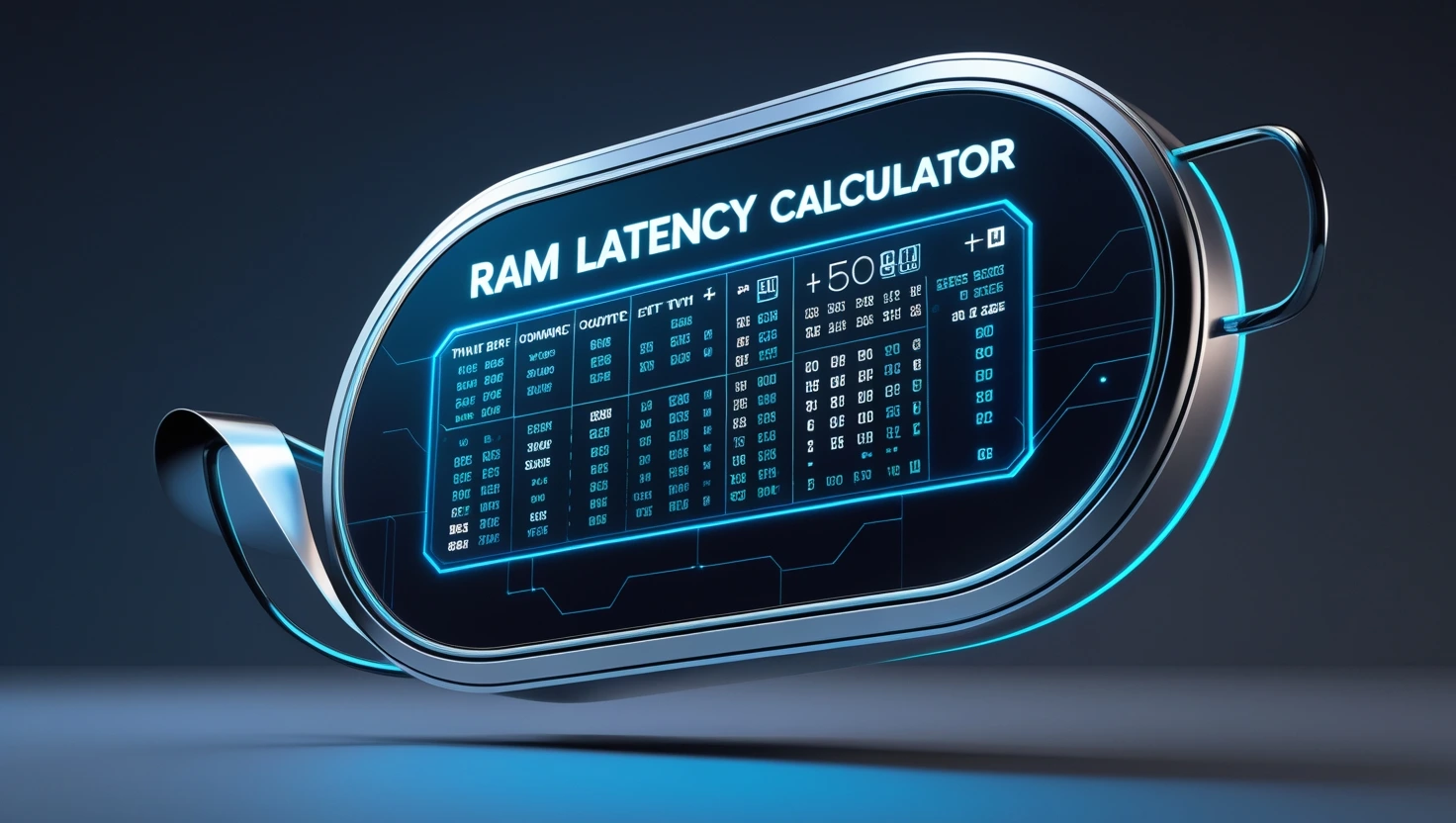When it comes to RAM performance, speed isn’t the only factor that matters. Latency for RAM plays a crucial role in how fast your system accesses data. A RAM Latency Calculator helps determine the true responsiveness of your memory, ensuring smooth performance in gaming, video editing, and resource-intensive applications.
Many users focus solely on RAM speed, but understanding memory latency is essential for making informed purchasing decisions. This guide will cover:
- How to use a RAM Latency Calculator
- The RAM Latency Formula
- How RAM speed vs latency affects performance
- Best CAS Latency for gaming and workstation builds
Let’s dive in.
What is RAM Latency?
RAM latency refers to the delay between when a request for data is made and when it is received. It’s measured in nanoseconds (ns) and depends on:
- RAM frequency (MHz)
- CAS Latency (CL)
- Other RAM timing values (tRCD, tRP, tRAS)
Using a memory latency calculator, you can determine the true RAM performance beyond just MHz values.
How to Calculate RAM Latency Using a RAM Latency Calculator
The RAM latency formula is:
True Latency (ns)=CAS Latency × 2000 ÷ RAM Clock Speed
Example Calculation:
For DDR4-3200 RAM with a CAS Latency (CL) of 16:
16×2000 ÷ 3200=10 ns
Even though DDR5 RAM runs at much higher speeds (e.g., DDR5-6000), it can have CAS Latency values as high as CL40, making it slower in real-world performance than lower-speed DDR4 RAM with lower CAS latency.
Comparing RAM Latency: Speed vs Latency
RAM Latency Comparison Chart
| RAM Type | Speed (MHz) | CAS Latency (CL) | Latency (ns) | Performance Level |
|---|---|---|---|---|
| DDR4-3200 | 3200 MHz | CL16 | 10 ns | Great |
| DDR4-3600 | 3600 MHz | CL18 | 10 ns | Excellent |
| DDR5-6000 | 6000 MHz | CL40 | 13.33 ns | Good |
This proves that latency vs speed in RAM is just as important as MHz values.
Best CAS Latency for Gaming and Workstations
Many gamers ask: “Is 40 latency for gaming bad?”
For high-performance gaming, a lower CAS latency memory is better.
| RAM Type | Recommended CAS Latency (CL) | Gaming Performance |
|---|---|---|
| DDR3 | CL8 – CL10 | Decent |
| DDR4 | CL14 – CL18 | Excellent |
| DDR5 | CL30 – CL40+ | Good |
If you’re building a gaming PC, opt for DDR4-3600 CL16 or DDR5-6000 CL36 for the best RAM latency CL balance.
RAM Speed vs Latency: Finding the Best Balance
Many users ask: “Is higher frequency better than low latency?”
The best RAM latency speed depends on your workload:
- For gaming → Lower CAS latency for gaming is better (DDR4-3600 CL16).
- For video editing & multitasking → Higher MHz helps, but must balance CAS latency.
- For budget builds → DDR4-3200 CL16 offers the best value.
Using a RAM timing calculator can help determine the best RAM speed vs latency for your needs.
How to Check RAM Timings & Latency
1. Check in Task Manager (Windows)
- Open Task Manager → Go to Performance → Click on Memory
- View RAM frequency and total capacity.
2. Use CPU-Z (Advanced Users)
- Download CPU-Z → Navigate to Memory tab
- Find CAS Latency (CL), tRCD, tRP, and tRAS
- Use a RAM latency calc tool for exact values.
How to Calculate RAM Speed
To determine true RAM speed, use:
Effective RAM Speed = RAM Frequency×2
For example:
- If your base RAM frequency is 1600 MHz,
For RAM bandwidth calculation:
Bandwidth (GB/s)=Clock Speed×Bus Width × 2 ÷8
Why Use a RAM Latency Calculator?
A RAM latency calculator helps in:
- Buying decisions – Compare CAS latency DDR5 vs DDR4 before upgrading.
- Troubleshooting issues – Identify slow computer memory latency.
- Optimizing performance – Balance latency timing with MHz for best efficiency.
FAQs About RAM Latency
How does RAM latency affect gaming performance?
Lower CAS latency reduces input lag and improves frame times.
Is 40 latency for gaming bad?
Yes, CL40 is too high for gaming. Choose CL30 or lower for best results.
How do I check my RAM CAS latency?
Use CPU-Z, Task Manager, or BIOS.
What’s the best RAM latency for DDR5?
For DDR5, CL30 – CL36 is best. CL40+ is less ideal.
Does lower CAS latency always mean better RAM?
Not necessarily. Lower CL is good, but must balance with MHz speed.
Final Thoughts: Optimize RAM Performance with a RAM Latency Calculator
Understanding RAM latency is crucial for gaming, productivity, and workstation performance. By using a RAM latency calculator, you can:
- Choose the best CAS latency for gaming
- Balance RAM speed vs latency for efficiency
- Improve performance with overclocking
